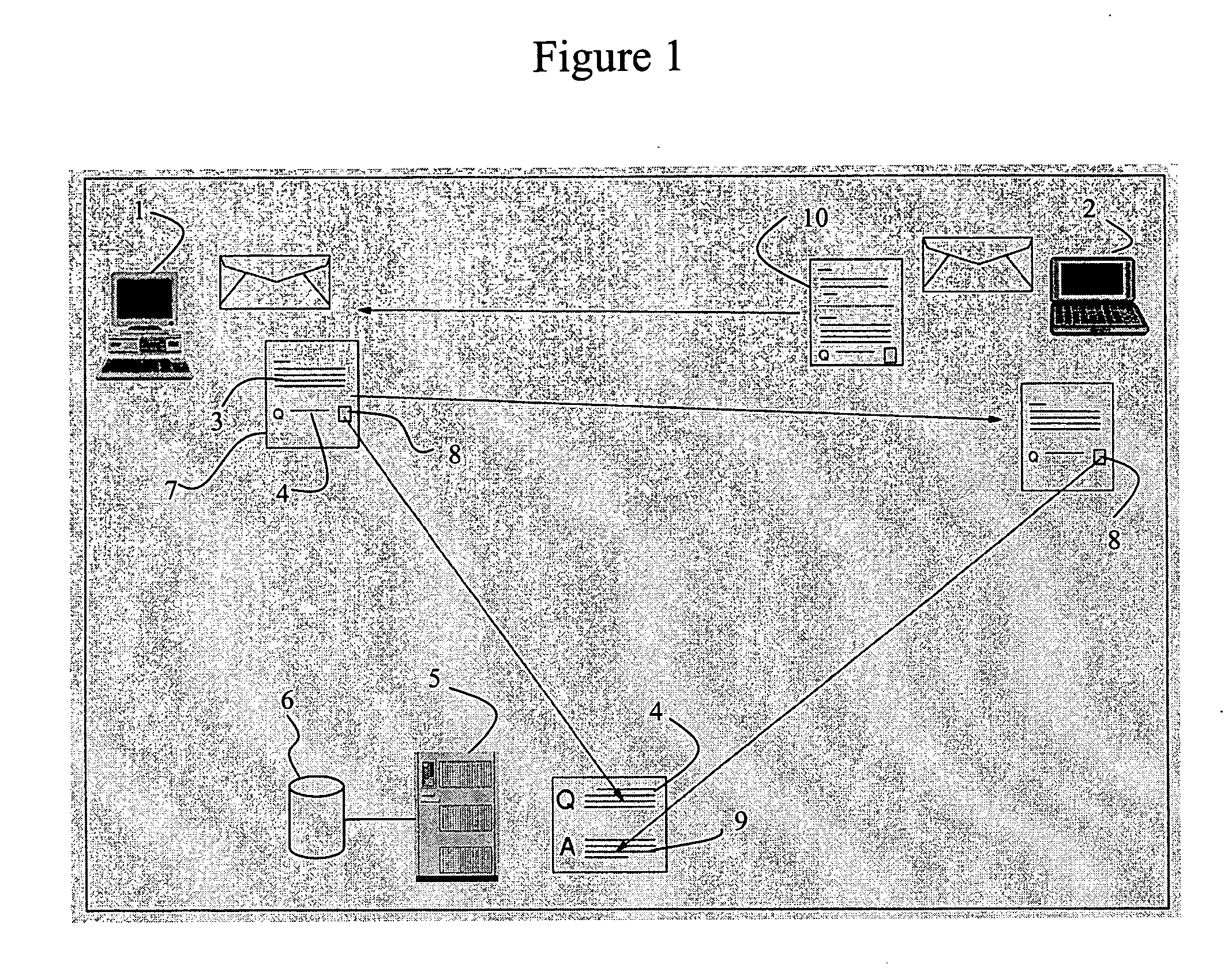Knowledge system
a knowledge system and knowledge technology, applied in the field of knowledge systems, can solve the problems of not having all the expertise no single individual has all the information that the company needs, and difficulty in training new recruits at a sufficient rate to prevent unnecessary repetition of earlier, so as to quickly build up a large knowledge bas
- Summary
- Abstract
- Description
- Claims
- Application Information
AI Technical Summary
Benefits of technology
Problems solved by technology
Method used
Image
Examples
Embodiment Construction
[0073] There are many scenarios in which it is desirable to be able to map a given piece of information (a “data block”) to some associated piece or pieces of information in a fast and efficient manner. This same mapping may have been performed many times in the past, and it is desirable to be able to make use of those past results in order to avoid having to perform a detailed analysis yet again. For example, one can consider a question presented in textual form and to which a person wishes to obtain an answer. The answer to the same question may have been obtained in the past by the same person who is now asking the question, or perhaps by some other person. If the question is formulated as part of an electronic document, e.g. an email, at a client terminal (coupled to the Internet), the solution discussed below is appropriate. Of course, analogous solutions may be applied to map data blocks representing information other than questions and answers. For example, the solution may b...
PUM
 Login to View More
Login to View More Abstract
Description
Claims
Application Information
 Login to View More
Login to View More - R&D
- Intellectual Property
- Life Sciences
- Materials
- Tech Scout
- Unparalleled Data Quality
- Higher Quality Content
- 60% Fewer Hallucinations
Browse by: Latest US Patents, China's latest patents, Technical Efficacy Thesaurus, Application Domain, Technology Topic, Popular Technical Reports.
© 2025 PatSnap. All rights reserved.Legal|Privacy policy|Modern Slavery Act Transparency Statement|Sitemap|About US| Contact US: help@patsnap.com



